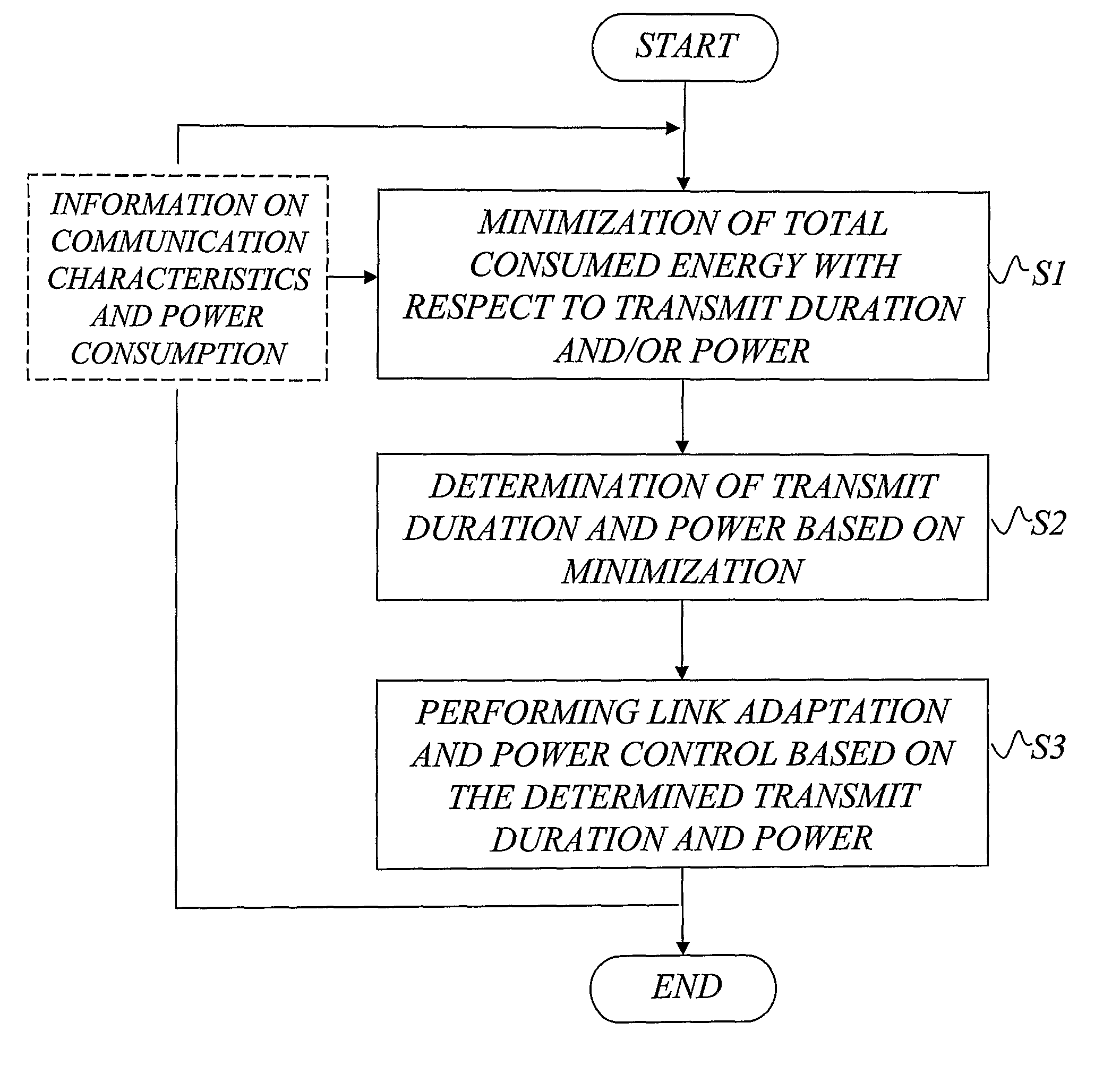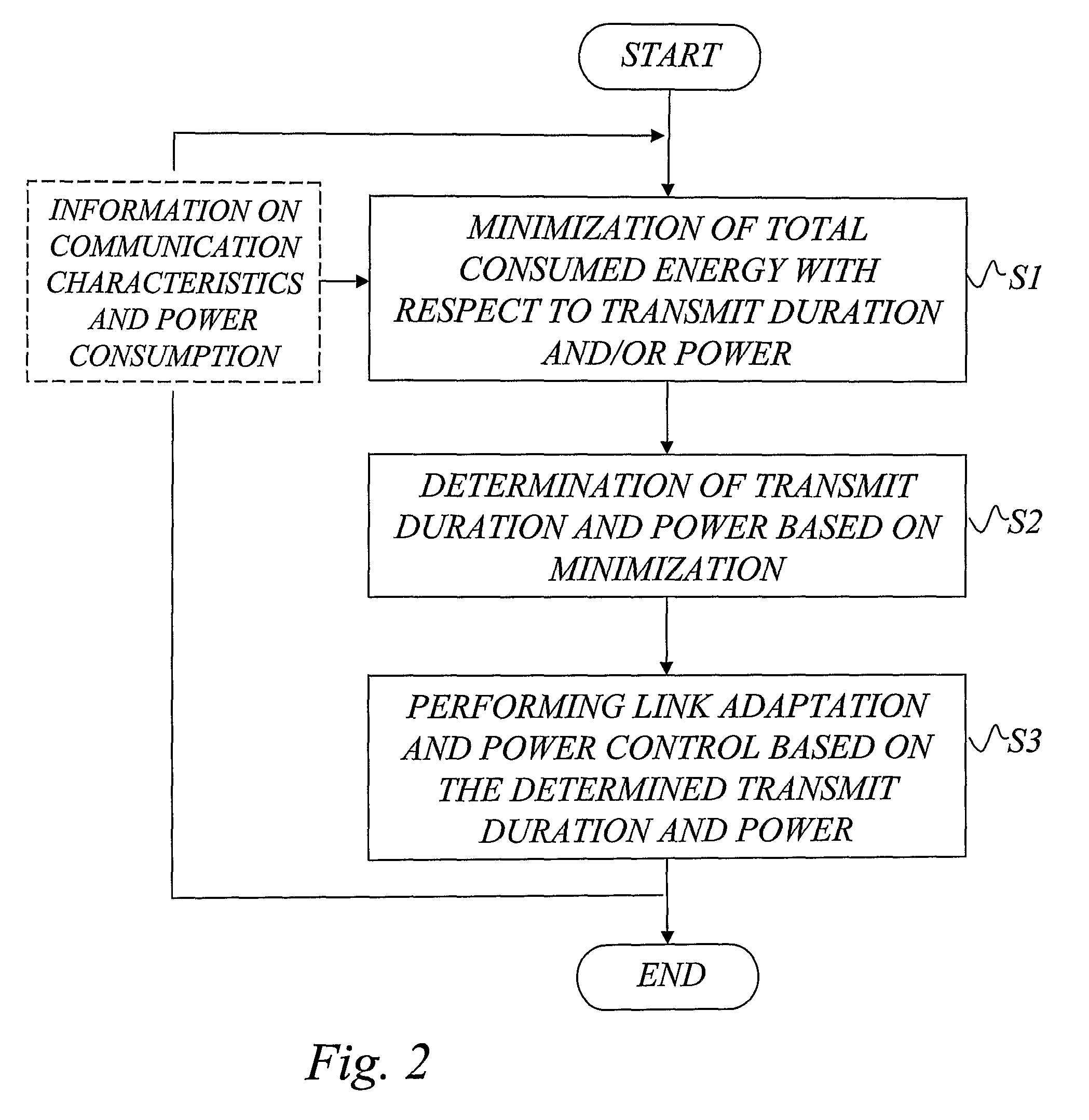Link adaptation and power control with consumed energy minimization
a technology of consumption energy and link adaptation, applied in the field of wireless network communication, can solve the problems of unfavorable low transfer rate at relatively high transmit power level, high energy consumption level, and inability to realize reliable communication, and achieve the effect of reducing the overall consumed energy of the devices participating
- Summary
- Abstract
- Description
- Claims
- Application Information
AI Technical Summary
Benefits of technology
Problems solved by technology
Method used
Image
Examples
performance example
[0082]To give some performance estimate, and a sense of operating range, the parameters in (2) were assumed to be:[0083]α=4. This is an estimation of the power amplifier's efficiency, i.e. assumed to be 25%.[0084]P0=2·4·10^(PLO / 10) mW·PLO=+7 dBm is the mixer's required local oscillator (LO) power level (here assumed to be low since it is a low power application that is targeted). The extreme mixers range up to PLO=+27 dBm). The factor 4 is included for estimating the efficiency of the LO plus other RF and baseband circuitry. The factor 2 accounts for LOs on both the transmitter and receiver side.[0085]Γ=G / W where the path gain was set to G={−40,−100} dB, and the noise (and interference) level was W=kTBNF, where k=1.38e−23, T=273+25, B=100 MHz, and NF=6 dB.[0086]T0=0.
[0087]FIG. 7 is a schematic diagram illustrating curves of energy consumption and receiver SNR as a function of transmit power according to an exemplary embodiment of the invention. The consumed energy is plotted as well...
PUM
 Login to View More
Login to View More Abstract
Description
Claims
Application Information
 Login to View More
Login to View More - R&D
- Intellectual Property
- Life Sciences
- Materials
- Tech Scout
- Unparalleled Data Quality
- Higher Quality Content
- 60% Fewer Hallucinations
Browse by: Latest US Patents, China's latest patents, Technical Efficacy Thesaurus, Application Domain, Technology Topic, Popular Technical Reports.
© 2025 PatSnap. All rights reserved.Legal|Privacy policy|Modern Slavery Act Transparency Statement|Sitemap|About US| Contact US: help@patsnap.com



